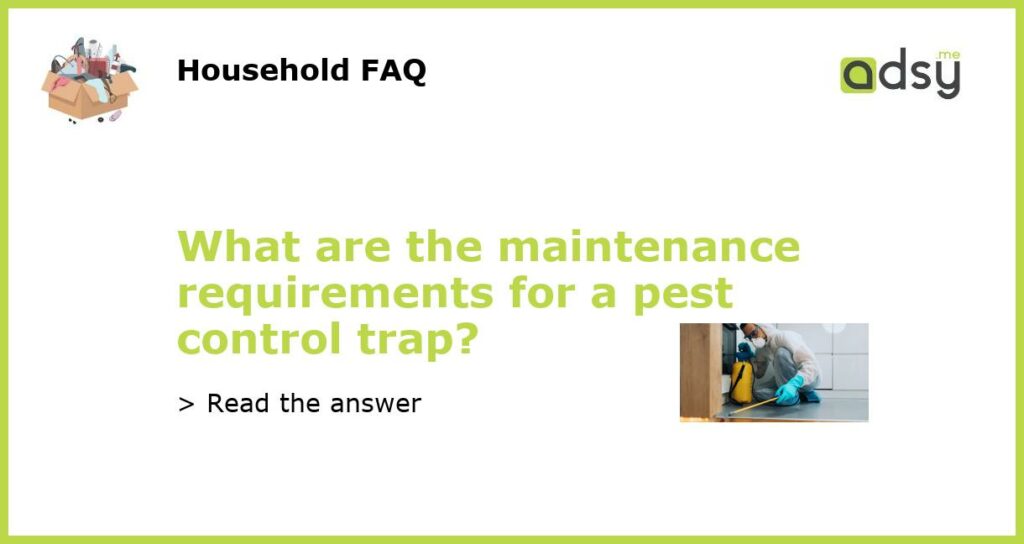Maintenance Requirements for a Pest Control Trap
A pest control trap is an essential tool in managing and eliminating pests from your home or property. However, to ensure its effectiveness and longevity, it is crucial to properly maintain and care for the trap. In this article, we will discuss the maintenance requirements for a pest control trap, including cleaning, regular inspections, bait replacement, and proper disposal of trapped pests.
Cleaning the Trap Regularly
The first and most important maintenance requirement for a pest control trap is regular cleaning. Over time, traps can accumulate dirt, debris, and dead pests, which can reduce the trap’s effectiveness. To clean the trap, start by wearing gloves to protect your hands from coming into direct contact with the pests. Remove any trapped pests from the trap and dispose of them properly. Then, wash the trap with soap and warm water to remove any dirt and residue. Rinse thoroughly and allow the trap to air dry before reassembling and reusing.
Regular Inspections for Damage or Wear
Regular inspections are crucial to identify any damage or wear to the pest trap. Check for any cracks, holes, or broken parts that may compromise the trap’s functionality. Regular inspections also allow you to identify signs of pests that may have tampered with or damaged the trap. If any damage or wear is identified, it is essential to repair or replace the trap to ensure its effectiveness in capturing pests.
Bait Replacement
Baits are a crucial component of pest control traps as they attract pests and entice them into the trap. However, baits can lose their effectiveness over time or become spoiled, reducing their allure to pests. It is important to regularly check and replace the bait in the trap to maintain its attraction. Follow the manufacturer’s instructions for the specific type of bait used and ensure it is fresh and enticing to pests.
Proper Disposal of Trapped Pests
Once pests are trapped in the pest control trap, it is crucial to dispose of them properly to prevent any potential health or sanitation issues. Depending on the type of trap, you may need to remove the trapped pests manually or dispose of the entire trap, following local regulations and guidelines for pest disposal. Always wear gloves when handling trapped pests and use a sealed container or bag to prevent any pests from escaping during disposal.
Store the Trap Properly
When not in use, it is important to store the pest control trap properly to prevent damage or contamination. Store the trap in a dry and secure location, away from children or pets. Keep the trap in its original packaging or use a sealed container to prevent dust, dirt, or pests from getting into the trap. Proper storage ensures that the trap remains effective and ready for use whenever needed.
In conclusion, proper maintenance of a pest control trap is essential to ensure its effectiveness in capturing and eliminating pests. Regular cleaning, inspections for damage or wear, bait replacement, proper disposal of trapped pests, and proper storage are crucial for maintaining the trap’s functionality. By following these maintenance requirements, you can maximize the effectiveness and longevity of your pest control trap.

